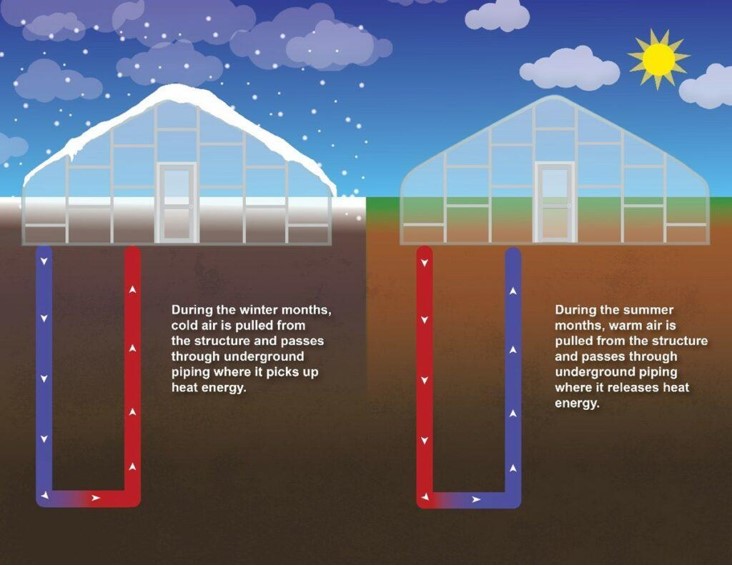- Definition and Types of Energy
- Myths And Misconceptions About Energy
- The Relationship Between Energy and Environment
- Climate Change and Carbon Footprint
- Greenhouse Gas Effect
- The Role of Human-Induced Greenhouse Gases and Energy Consumption
- Energy Efficiency and Sustainability
- Renewable Energy Sources and Future Perspectives
- Play and Learn
- Solar Energy Conversions
- Solar Energy Worldwide
- Solar Energy in Partner Countries
- Positive and Negative Impacts
- Technologies for Harnessing Solar Energy
- Solar thermal energy technologies and applications
- Electricity Generation Methods
- Passive Heating and Cooling of Residences with the Sun
- Concentrator solar power (CSP) systems and electricity generation
- Systems and Applications That Generate Electricity directly from solar rays
- Photovoltaic Cells and Panels
- Domestic PV Systems
- Off-Grid PV Systems
- Hybrid Connected Systems
- Materials Used in PV Cells
- Play and Learn
Greenhouse Heating
Geothermal energy is a widely used method for heating greenhouses. Greenhouse heating systems vary depending on the heating technique used. The most suitable sources for greenhouse heating with geothermal energy are shallow, superficial geothermal sources with a temperature of 25-60°C. Such sources offer an economical option because their excavation, operation, pumping and maintenance costs are lower. Geothermal heating improves temperature control in greenhouses, increases plant productivity and provides environmental benefits by reducing fossil fuel consumption.
